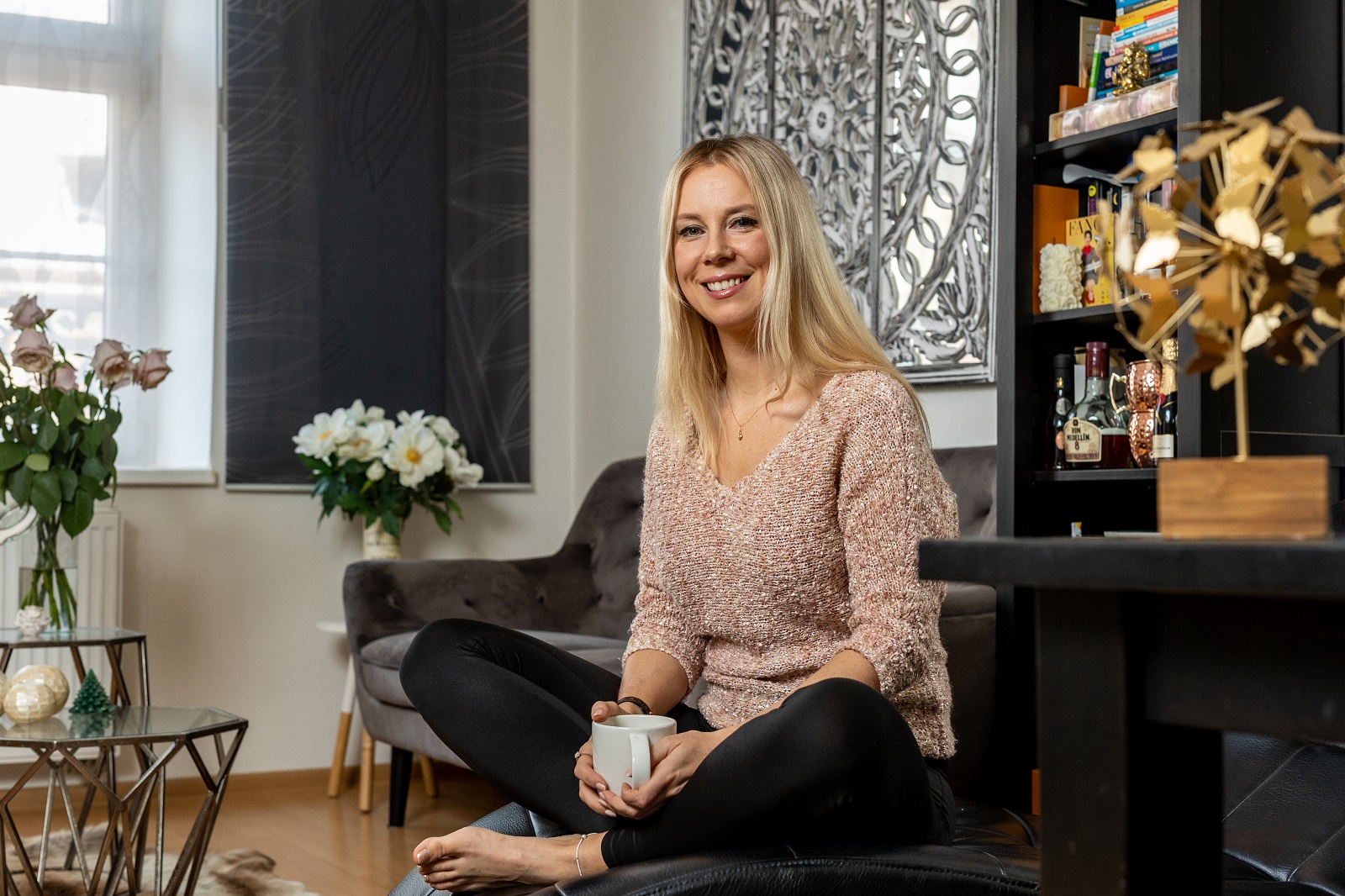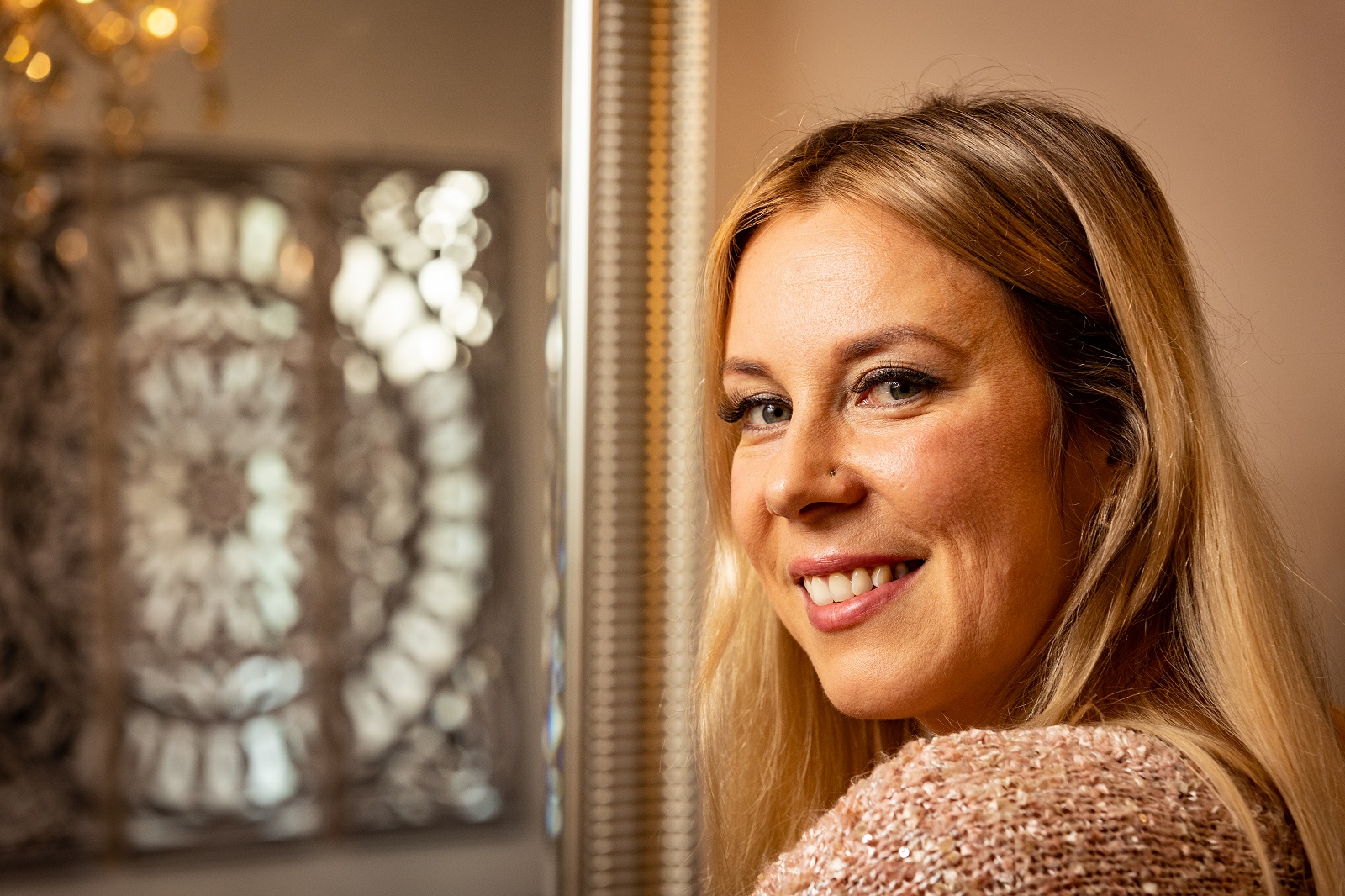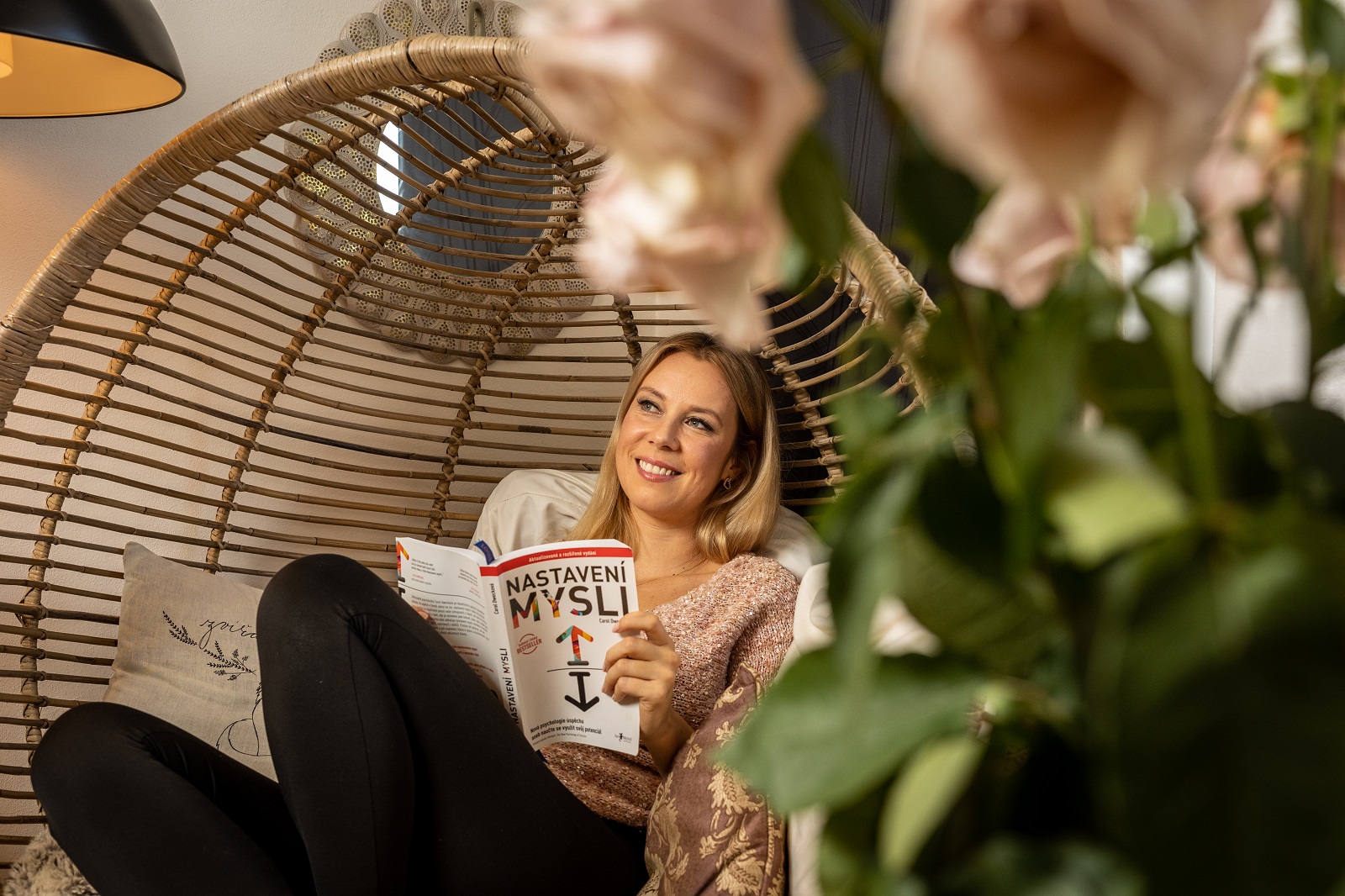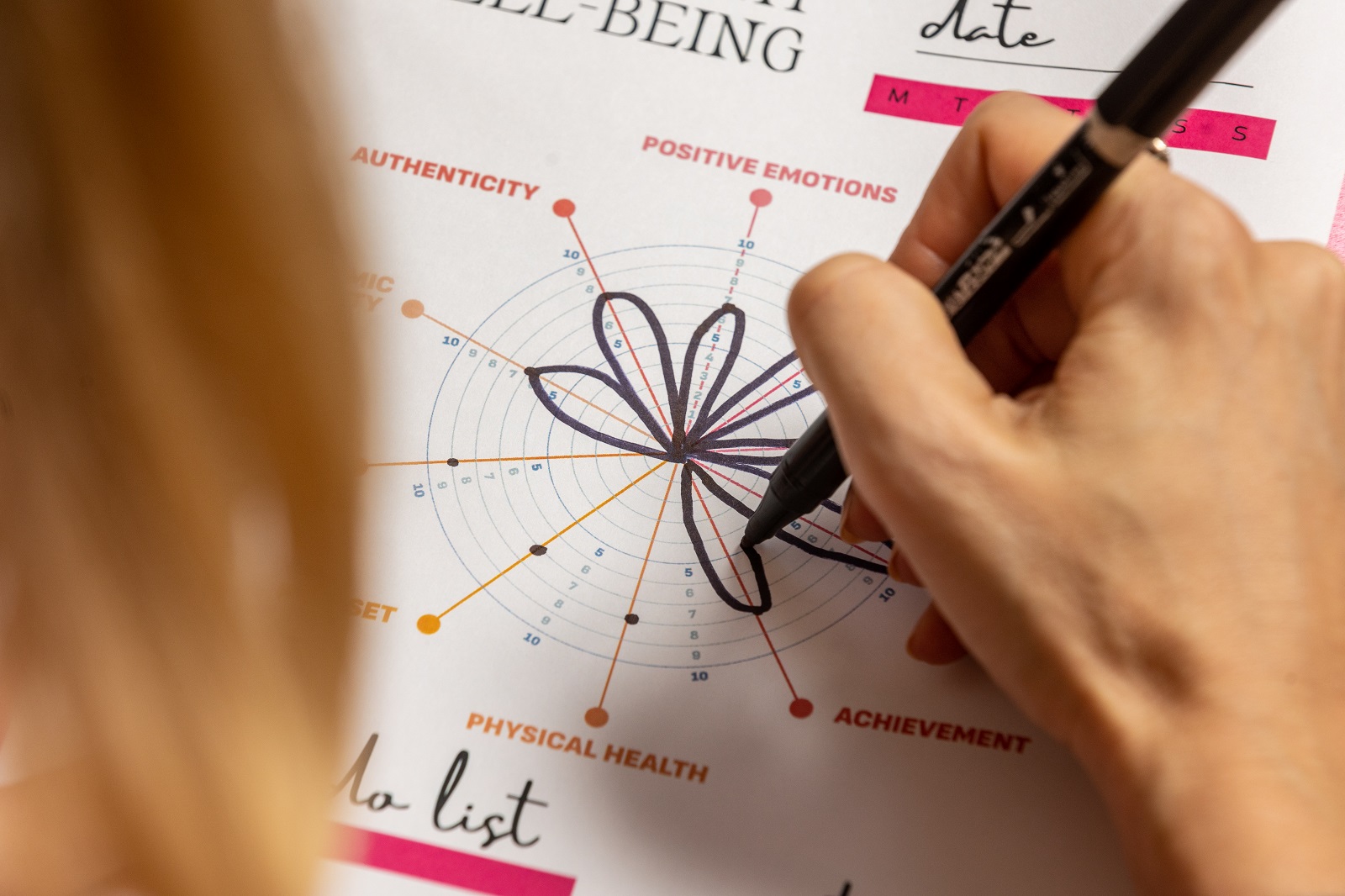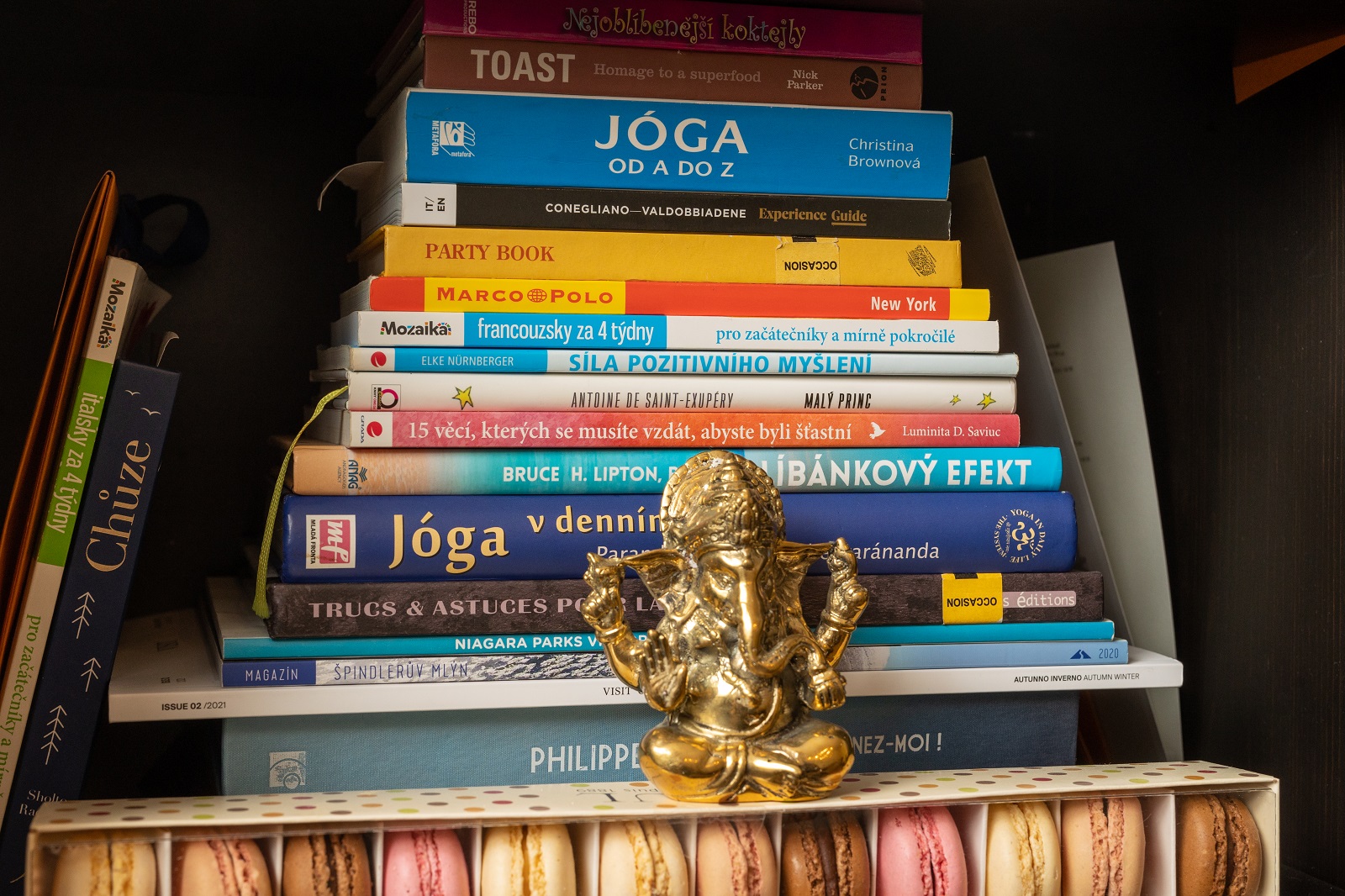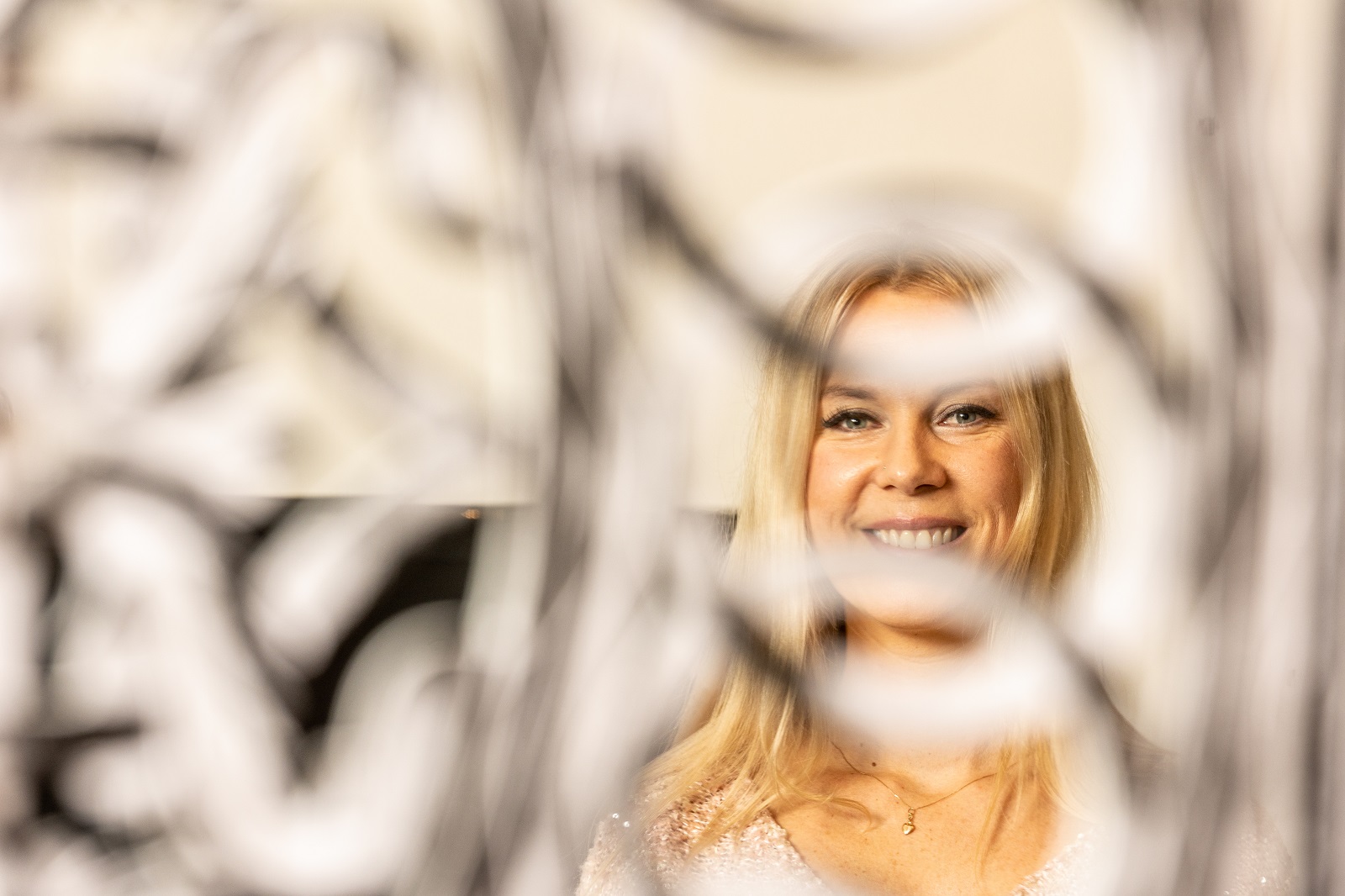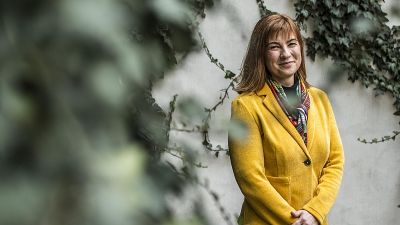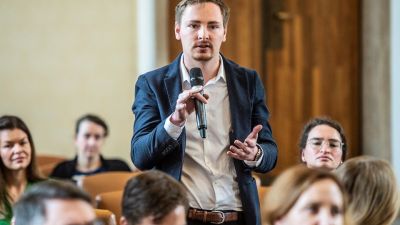“I teach my students that living a good quality life where we feel good doesn't always mean that everything works out. Negative emotions reveal a lot about our value system, we learn a lot about ourselves and the world thanks to them,” says Jana Kočí from the Faculty of Education of Charles University. As a professional, she is especially dedicated to developing well-being in the university environment.
What distinguishes a person who lives in the spirit of well-being?
They behave authentically, are aware of all their feelings, and not only the positive ones. That person accepts themselves as they are. They know themselves and know how to present themselves in a healthy way. Well-being is the art of living. Which doesn't just mean living well, although it may seem so from the name itself, but accepting life as it comes. To be able to experience and process the negative, not to avoid it. Sometimes we have a tendency, which was the case for me a few years back, and I still remind myself that part of well-being are the moments in life that are not pleasant. And it's good to be able to “sit through those moments”, not run away from them. In doing so, we learn a tremendous amount about ourselves, about the world. Emotions teach us how to live.
How much should we immerse ourselves in them, and when, on the contrary, should we curb them?
One of the main gauges of when negative experiences are too much is their longevity and depth. If we feel that you are overwhelmed, you need to be able to ask for help. Our inner self can give us clear messages, we just have to want to hear them. We humans are social beings, set up to share things. Talking about problems helps us a lot. Emotions give us rich information about what's going on, what our values are at risk. They tie into our value system: what's important to us, what we care about, how we want to live. Like I said, don't run from them. On the other hand, as you pointed out, it's certainly not good to stew in them for days and weeks, and if one feels tension, to talk right to oneself and ask, “What would help me? What can I do to feel better?” Listen for a while... and an answer usually presents itself.
One gets clear on whether the feeling of threat is even adequate. Whether we have exaggerated expectations that are unrealistic in the moment.
Absolutely. Knowing that it's perfectly normal when something doesn't work the way we'd like it to. We need to be able to function even in a certain “mess” (laughs).
Which is very difficult for some people.
Yes, part of the identity of some of us is to do things to the best of our ability, to be perfect at all times, and to lose that status doesn't do any good.
Well-being then encapsulates all possible positive approaches to life?
It is based on positive psychology, which focuses on what we are good at in life and what we can do to keep things running in the direction we want. It focuses on positive qualities and skills. We all have weaknesses, which is perfectly natural, and I think it's one of the things that makes us attractive. However, positive psychology focuses on the application of our strengths in everyday life. How to use them to make us feel more comfortable and natural without putting too much pressure on ourselves and those around us. Terms such as self-acceptance, creativity or also flow (finding and pursuing things we enjoy) come up a lot.
On the other hand, it's good to step out of our comfort zone sometimes to push ourselves further. How hard is it to find a balance?
The ideal is to step out of our comfort zone when we have the strength to do so. Not so much through “I have to” and “I'll do it”, but more from a position of “I want” and “I need” - I have the capacity now, I'll allow myself to do it. When I discuss the topic of well-being with students, we mention terms like balance, feeling good, and we also prefer the word “challenge” over labelling something a “problem”. But the whole issue needs to be looked at individually. There is no universal cookbook or recipe for well-being. What helps a lot is the aforementioned conscious management of our inner dialogue, to be able to kick into action, whether it works or not, just to try. But alongside this, I warn students and colleagues, and I admit to myself, when, “This is too much again. Slow down and stay put for just a moment. Don't push so hard.” I see around me that this is really needed, especially in certain work environments. In addition to the well-being courses at Charles University, I also run workshops for people who need to slow down, remind themselves, and, most importantly, allow themselves time for themselves. Not to work 24-7.
I understand. I encounter this a lot when I talk to lecturers who mention that their workshops are attended by very ambitious people who have high expectations of themselves and laziness is a dirty word for them.
At the same time, laziness and boredom can be great for developing our creativity. The moment we stop, switch off and don't think about a niggling problem and instead let our brain work for us, it often comes up with a solution.
This brings us to flow. Is it possible to wake up by doing nothing?
It sure is. You just have to allow yourself to experiment. Sometimes we get into flow just from being still and calm, other times during prolonged conscious activity. Something different works for us at different times in our lives or even on different days. It is impossible to be 100% active, energetic and in flow all the time.
Which students do you work with specifically?
I work at the Department of Education at the Faculty of Education of Charles University. So I work both with future teachers from Bachelor and Master degree programmes, as well as with practising teachers who are completing lifelong learning programmes.
Do these two groups differ from each other?
Certainly, each of them works a little differently. However, they are all very much alike in how human and oriented to others they are. Which certainly led them to choose their field of study.
Do you teach well-being directly?
Yes. When I started at CU, I was doing courses related to healthy living and leisure pedagogy. However, a year and a half ago, together with the former head of the Centre for Lifelong Learning, we managed to open a certified course in well-being in both Czech and English. The first semester was a pilot programme, we first made it known to students from the Faculty of Education via social networks. There was a lot of interest in it, it filled up within an hour of registration opening. At the same time, it was “only” for a certificate and not for credits, which proves how interesting this topic is for students. Next semester we added a course for students from foreign universities in the 4EU+ Alliance.
So it is an online course.
Yes, but we also run this course online for Czech students and we see each other in person twice a semester.
How does that work out?
It works very well. From our regular questionnaire surveys, it seems that this format suits the students. They have their comfort at home, they can be snuggled in a blanket... I tell them it's perfectly fine if they don't talk, they don't have to have the camera on. Still, the students communicate a lot. We also text, we chat, we do some interesting polls. The participants are very active, but in their own zone, which I don't try to dismantle.

Jana Kočí is the co-author of a book about well-being and ways that especially university students can strengthen health and life satisfaction.
You are one of the few educators who still praises distance learning even after Covid.
I understand that some teachers are not completely comfortable with this form, but I really feel the students even through the monitor (laughs). I definitely don't feel like I have to pry anything out of them. On the contrary, our collaboration works very well. But we don't just use the camera and microphone, we work in a lot of interfaces that make online learning more actionable. Students may be sitting at computers, listening, but they have a mobile phone in their hand through which we share comments and opinions. I wouldn't change a thing. And it's not just my impression. Our research shows that the course has a significantly positive effect on its participants, even compared to a control group of students who did not take it. Thanks to these demonstrable results, we were able to accredit the course as a compulsory elective course six months ago and five credits can be earned for it.
I’d say the only shame is that there is a limited capacity of no more than 35 people.
But we are already addressing that. We have been working for almost a year to flip the course into an online interactive learning experience, where we are able to use technology to deliver lessons to an unlimited number of students that they can complete at virtually any time. And not only are they constantly active by completing assignments and answering questions, but they are accompanied at all times by a so-called avatar that is indistinguishable from a real live teacher and responds in the present tense to what students are saying and doing. The AI continuously processes their activities, comments and draws conclusions...
Are you already using AI in practice?
This winter term, we piloted the first part of a course on emotions in this way. My students were willing to try teaching with an AI assistant for one week. I confess that before testing, I was worried whether they would miss the element of a real teacher. They did the subsequent assessment anonymously, I asked them to be completely honest so I would know what didn't/doesn't work... But they were enthusiastic. There is no substitute for a live teacher and the interaction between them and their students. But I believe this is the future of education too. Our AI program also runs in English, so it can be offered again to international students as part of the 4EU+ Alliance. And of course, the problem of limited capacity of participants is also eliminated.
It is clear from your description that you teach through experiences and personal experiences. You are guiding students and giving them the tools to do well, which they will then be able to carry forward into practice.
I think that's much more effective than teaching by simply explaining the facts. Of course, those are necessary too, but if you can, students should be able to try out different strategies for themselves. By coming at it from the complete opposite side and teaching teachers how to take care of themselves first, building well-being is not just a theory for them, but part of their lifestyle, where they can be authentic and will quite naturally pass on their attitudes and experienced knowledge or proven tools to their students one day.
Your topic is wide-ranging across numerous approbations.
Absolutely. The courses bring together students from different backgrounds, and that's inspiring too because, although we're mostly all dealing with the same things, we all have slightly different priorities or come at them through different pathways.
What is the takeaway that you want to impart to students?
I focus on three criteria: to provide students with current valid scientific knowledge (evidence-based theory) in a way that is interesting and understandable to them, and that they can apply to their individual lives. Next, the opportunity for self-reflection, which is why every class includes a self-assessment to see where we are in each area of well-being at any given moment. I then offer students evidence-based strategies and activities to help them develop their wellbeing in different areas of their lives.
Can you be specific?
The science of well-being talks about what are called building blocks, areas of our lives that help us generate our well-being. Whether long-term or momentary positive experiences. Today, there are nine such areas: positive emotions, engagement and flow, relationships, purpose, success, physical health, mindset, economic security and environment. In the book I wrote, I have further broken these areas down into smaller sub-areas so that the reader can get a more specific picture of what helps them build well-being. At CU, my colleagues and I reached out to students across all faculties to assess themselves in these sub-areas specifically. We came up with self-ratings in 78 areas of life reflected on a scale of 0 to 10, with zero representing dissatisfaction and 10 representing an ideal state. Based on the findings from these surveys and courses, my colleagues and I are developing a theory with colleagues from South America that would allow us to add one more area to these nine, which is authenticity. This is very important for all of us in general, but, as our research shows, it can be quite crucial for the college-age group.
How does the analysis of one such area, for example relationships, take place?
Each week in the course we go through one topic. If we talk about relationships, we assess relationships with ourselves, with friends, with classmates, with co-workers, with teachers, with family, with community... At the beginning of the class, we talk about how our relationships help develop our well-being, and then in the rest of the class we address social skills and evidence-based strategies for how to build quality relationships in our lives, or how to define ourselves if something doesn't work for us, and setting boundaries in relationships that don't work for us.
The 10 areas mentioned above are actually a huge number of aspects that make up life quality – in the positive and negative. How did the students react when they ‘surgically’ dissected and illuminated each part of their lives in this way?
Generally speaking, we collectively do everything we can to leave the seminars feeling well. I notice two basic things. First, most of us are perfectly comfortable with the fact that our lives, or some aspects of it, are not ideal. It is not necessary that we rank "10" in every single thing we do. Rather, you suddenly discover and understand that you, for example, are functioning in a certain way because you generate well-being alongside relationships dominantly through engagement at work, for example. But your partner or family functions a little differently across all the pillars, perhaps, other components of life are prioritised for them. For some people, taking care of their physical health is more important and they generate their well-being through that, while others generate their well-being through their purpose in life or something else.
How exactly do you work with this?
We visualise all aspects of life graphically. We paint diagrams of flowers with a target in the middle, with the petals around the petals being the different areas of well-being. We talk about what to do about it, whether it's okay that we have shorter petals one day and longer petals the next. Students think about why, whether it doesn't/doesn't matter to them, whether it would be worth changing, and if so, how.
This brings me to the second crucial point. As much as we talk about where we can go and where we have the potential for a good life, it's extremely important to mention in every meeting that it's also perfectly okay to experience some failure in all areas, and it's natural to have weaknesses and to fail at things. That is human.
To not be tense about what one needs to improve in order to achieve "10s" in all areas...
Exactly. You don't have to. It's about being aware of it. I myself learn openness from my students. I admire how even at a young age they can talk honestly about their experiences and share what is and isn't going well in their lives. It's amazing that they don't play games, talk about a lot of personal things and support each other, giving them strength and peace of mind.
You have been committed to a healthy lifestyle throughout your career. How did you get into this subject?
Coming from a very active family, physical activity has always come naturally to me. I graduated from an eight-year sports high school and was looking for a field of study that was related to a healthy lifestyle. At the time, the first year of the Bachelor's degree programme in Health Education was opening in České Budějovice, where I come from. I was intrigued that it combined both psychology and movement. At that time it was still a non-educational field, because health education was not yet taught in schools. When I was finishing my Bachelor's degree, this field was opened as a follow-up Master's degree at the University of West Bohemia in Pilsen, without having this field at the bachelor's degree level at that time. I was the first student to complete both a Bachelor's degree and a follow-up degree in health education.
Then, the next natural step for me was to go to Charles University in Prague, where there was already a health education department at the Faculty of Education. There I worked on a PhD and did several internships in the USA, where I studied in the health sciences and nutrition departments. And I still have that today, working with colleagues abroad, both from North and South America, on positive psychology research and projects. I have a visiting professorship at the Claremont Graduate University in California, where I try to help them translate their research on well-being into practice.
The book you wrote on well-being is aimed at a professional audience?
It's written in English and I wrote it intuitively at students. Each chapter focuses on one area of well-being and throughout the book I speak specifically to university students.
Do you mention your tenth area - authenticity?
Not yet. With colleagues from South America, we are now trying to verify and validate this element through research. But when the book is revised, authenticity will definitely be there (laughs).
Well-being won you over at what stage?
Right at the beginning of my studies here in the Czech Republic. When I was preparing for the university entrance exams, I was going through a year-long weekend course in psychology. I still remember a Saturday morning when the lecturer introduced us to positive psychology, the science of fulfilling our potential for contentment. It wasn't called well-being back then. For me, it was a total heureka moment when I discovered that I could study "something" that would help us feel better. What we can do to shape the life we want to have and be comfortable in. I was 17 at the time and it was a new momentum that turned my life around 180 degrees. And today, I am grateful to life for giving me the opportunity to work with our students, who, along with my colleagues, are the strongest contributors to my well-being.
| Jana Kočí, PhD |
| After studying at the sports high school, Jana Kočí graduated from the Bachelor's degree programme in Health Education at the University of South Bohemia in České Budějovice. She continued her studies at the University of West Bohemia in Plzeň and completed her doctorate at the Department of Education of Charles University, where she works today. She teaches the subjects of healthy lifestyle strategies, leisure pedagogy and well-being of students. During her doctoral studies, she completed internships at the University of Nebraska in the USA, where she was engaged in research and teaching of health sciences, and today she has an affiliation with Claremont Graduate University in California. Her professional specialties are education in well-being, healthy lifestyles, and positive psychology. She has recently published a book, Well-Being and Success for University Students: Applying PERMA+4, in collaboration with colleague Stewart I. Donaldson, in which she summarizes all of the existing scientific knowledge about well-being and presents ways in which college students in particular can enhance their health and life satisfaction. |


